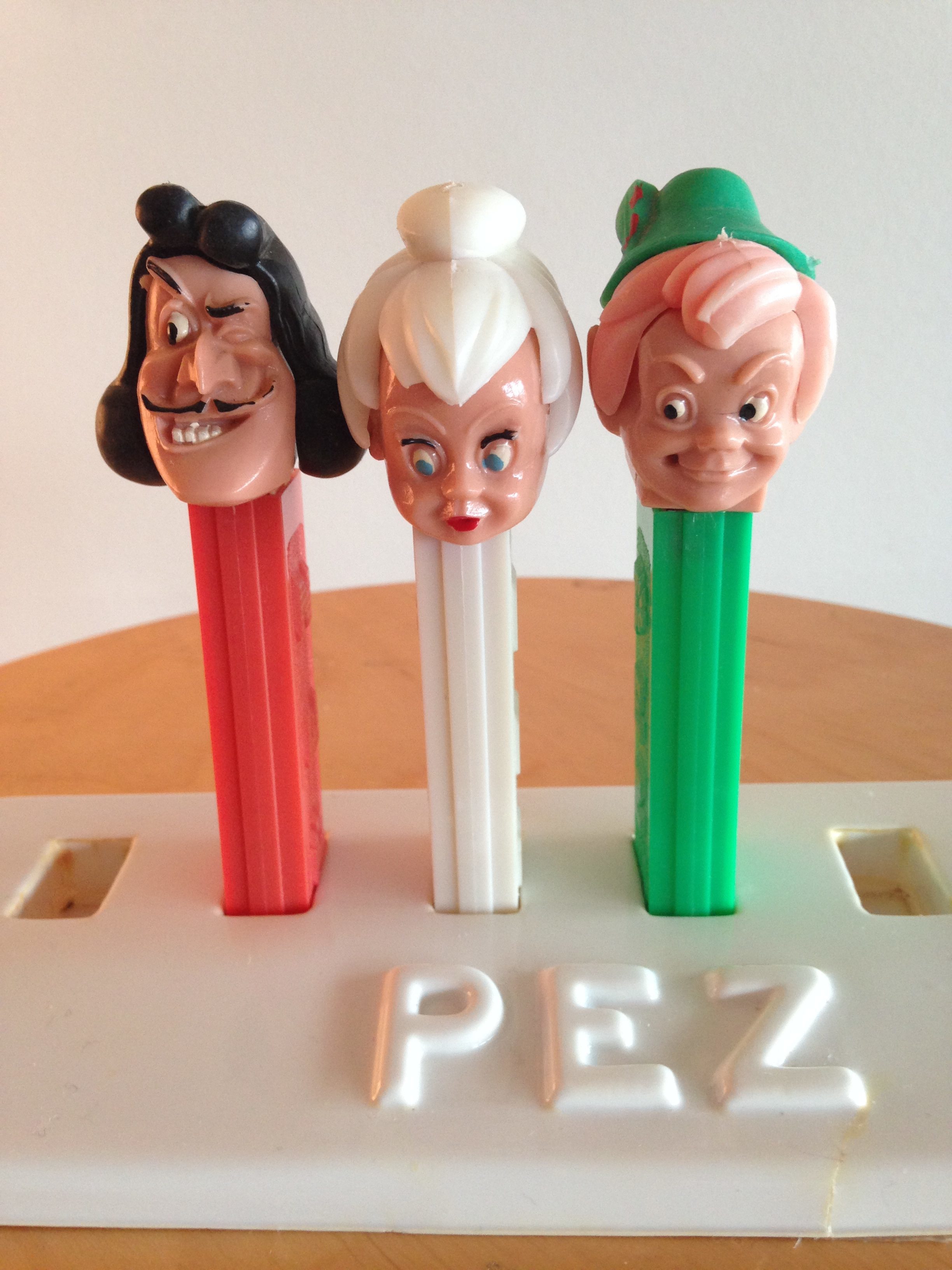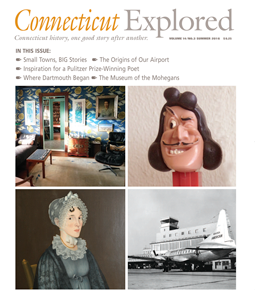By Jennifer LaRue
(c) Connecticut Explored Inc. SUMMER 2016
Subscribe/Buy the Issue!
How did PEZ, manufacturer of the iconic miniature brick-shaped candies and their whimsical, interactive dispensers, come to be located in Orange, Connecticut?
“There was no Grape, Lemon, or Strawberry, Connecticut,” says PEZ spokesperson Shawn Peterson, whose history of PEZ will be published by Arcadia Publishing/The History Press this fall. That’s the official, if clearly tongue-in-cheek, explanation. What we do know is that after establishing a headquarters in New York City in 1952, the company began manufacturing in Orange, eight miles west of New Haven, in 1974 where the company found ample land to build a factory. But the story begins nearly 50 years earlier in Europe.
PEZ-Haas Inc. was founded in Vienna, Austria by Eduard Haas III in 1927. Haas, whose primary business had involved producing baking powder and other baking items under the brand name Haas, had invented the compressed-brick candies as breath mints and alternatives to smoking; the name “PEZ” derives from the German word for peppermint, pfefferminz, according to International Directory of Company Histories, Vol. 38 (St. James Press, 2001), accessed at FundingUniverse.com.
The candies, initially sold in tins, were marketed solely to adults, often with the help of scantily clad (for the era) “PEZ girls.” Sales increased throughout Europe during the following years, and in 1935 a factory was opened in Hungary to accommodate increased production. Ostensibly healthful flavors such as lemon and chlorophyll mint were added to the flavor lineup. The original dispenser, designed in 1948 and introduced at the Vienna Trade Fair in 1949, was meant to resemble a cigarette lighter, according to the PEZ website. In fact, the company history on FundingUniverse.com notes that “The cigarette lighter-shaped dispenser was not only a trick to play on smokers asking for a light, but it was hygienic, allowing PEZ users to give the candy to friends without touching it.” That history also notes that, “As an item for adults, PEZ was marketed at a much higher price than other candies. Candy bars in 1953 cost five cents, and PEZ sold for 25 cents for a dispenser and two refills.”
 In the early to mid-1950s PEZ (having separated from the Haas baking-products business) shifted gears as it realized its candies and the interactive dispensers appealed to children; PEZ began to manufacture fruity flavors such as orange and wild cherry and dispensers shaped like a robot, a space gun, and Santa Claus. (According to Peterson, the Santa Claus dispenser remains the company’s best-seller.) Haas patented the dispenser upon opening headquarters in New York in 1952 and began marketing his products exclusively to children in 1955.
In the early to mid-1950s PEZ (having separated from the Haas baking-products business) shifted gears as it realized its candies and the interactive dispensers appealed to children; PEZ began to manufacture fruity flavors such as orange and wild cherry and dispensers shaped like a robot, a space gun, and Santa Claus. (According to Peterson, the Santa Claus dispenser remains the company’s best-seller.) Haas patented the dispenser upon opening headquarters in New York in 1952 and began marketing his products exclusively to children in 1955.
The Popeye dispenser, the first to represent a licensed character, debuted in the late 1950s; in 1961, PEZ was licensed by Disney to create a Mickey Mouse dispenser. Throughout the 1960s the company expanded its line of dispensers to include a number of other Disney characters, along with Casper the Friendly Ghost and Bozo the Clown.
The move to Orange in 1974 gave that town, until then best known as home to companies producing vegetable and grass seeds, a new claim to fame. Orange was incorporated from a northern section of Milford and a western section of New Haven in 1822. It was named in honor of William of Orange of England, according to Mary Woodruff’s The History of Orange, North Milford, Connecticut 1639 – 1949 (orange.lioninc.org/woodruff/index.htm). The town’s website notes that “Orange remained a simple farming community until the mid-1940s when postwar residential construction began.”
Marketing PEZ to children proved a smart idea, and the company continued to grow and add new characters and fruity flavors such as orange and cherry to its offerings. But by the late 1970s, sales began to slump, and in the absence of any advertising throughout the 1980s, PEZ fell largely off the face of the cultural map. But in the early 1990s, mentions on several television shows, most notably Seinfeld (in a December 1993 episode in which a Tweety Bird dispenser plays a key role) helped rekindle the American public’s interest in PEZ. That coincided with a wave of nostalgia and hunger for childhood collectibles among the Baby Boomer generation, and PEZ’s popularity surged. The first PEZ collectors’ convention—the Dispens-O-Rama—was held on June 15, 1991, in Mentor, Ohio, and in 1993, Christie’s held the first major pop-culture auction featuring PEZ dispensers, according to the PEZ website.
PEZ’s website reports that more than three billion PEZ candies are consumed each year in the U.S. In December 2011 PEZ Candy Inc, USA added a 4,000-square-foot visitor center featuring, according to the company press release, “the largest, most comprehensive collection of PEZ memorabilia on public display in the world.” The facility, which includes a production-floor viewing area, PEZ Girl uniforms, rare and one-of-a-kind dispensers, a wall-mounted, interactive timeline of PEZ-history highlights, and the world’s largest PEZ dispenser, in 2015 attracted more than a quarter-million visitors, Peterson says.
Jennifer LaRue is editor of Connecticut Explored, contributor to Grating the Nutmeg, the podcast of Connecticut history, and director of writing at The Mark Twain House & Museum.
Explore!
The PEZ Visitor Center
35 Prindle Hill Road, Orange
pez.com, 203-795-0531
Read More!
Read about Peter Paul, maker of Mounds and Almond Joy candy bars–a Connecticut invention! Peter Paul’s Path to Sweet Success, Spring 2010
And about other Connecticut food brands: Pepperidge Farm, and Bigelow Tea in the Winter 2015-2016 issue.
Read more about products Made in Connecticut


